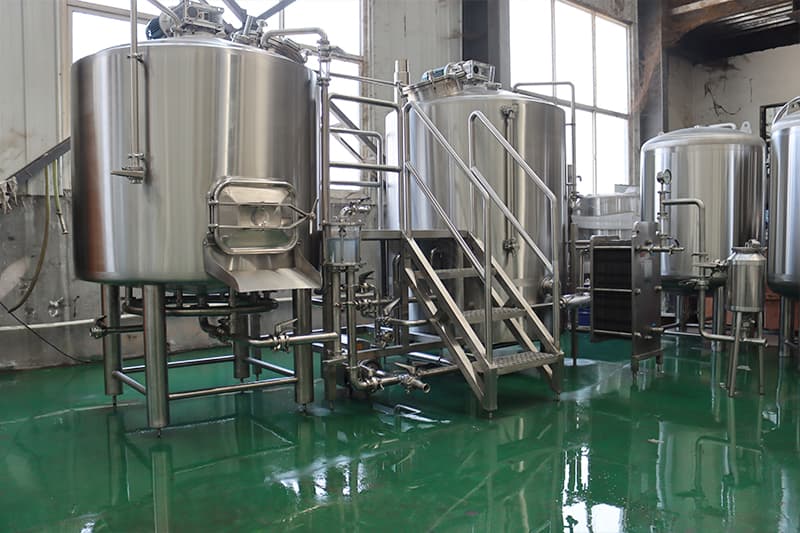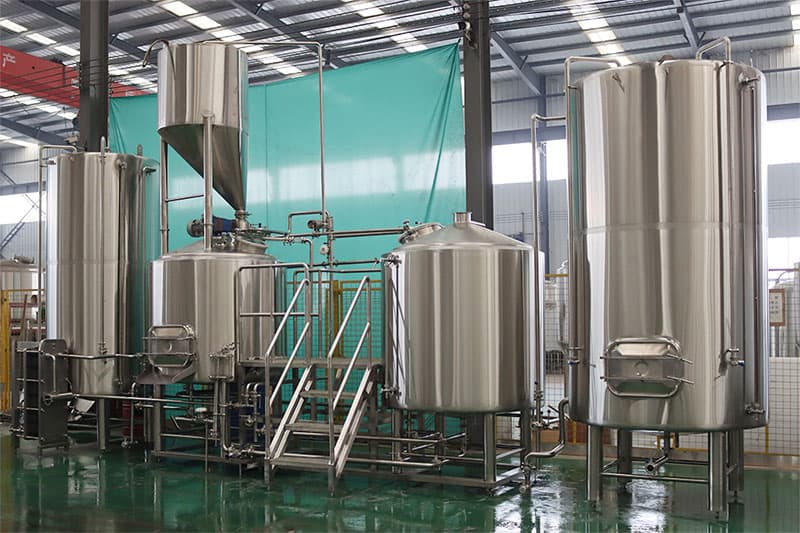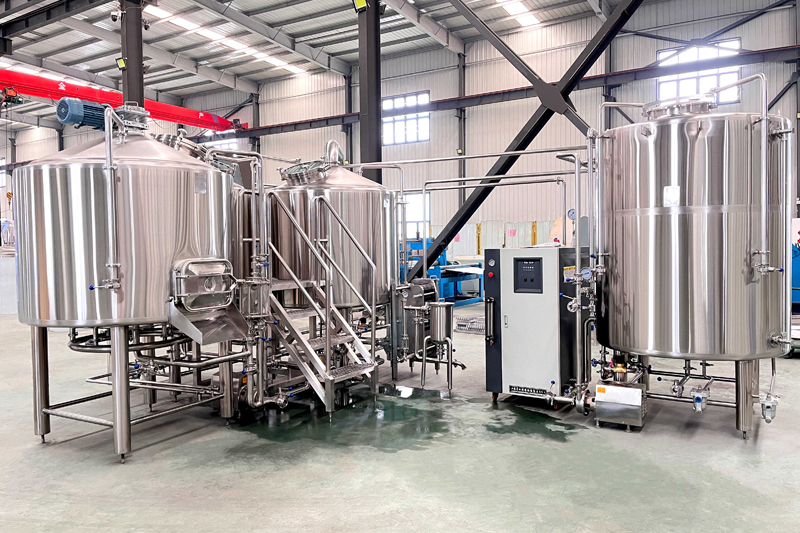The brewing world is changing fast. Breweries are everywhere. The need for high-quality brewery equipment is growing every year. But, starting or growing a brewery can be tough. The wrong buying choices can cost you money, time, and beer.
Buying brewery equipment is confusing. Prices are high. Choices are endless. Many brewers don’t know if they need a 10BBL brewery system or something larger—or if new or used is better for their needs. Rushed choices lead to regret and wasted investment.
Imagine it: spending your savings, your hopes, maybe a loan, only to find out that your equipment breaks down, wastes water, or can’t grow with your dreams. With upfront costs averaging $250,000 to over $2 million, every dollar matters. Packaging machines alone often cost $50,000 to $200,000 [Craft Brewing Business]. Used systems look cheaper, but they can come with hidden repair costs and no warranty [ProBrewer Equipment Exchange]. Plus, with global supply chain delays, finding reliable service and parts is harder than ever [IBISWorld].
1. Understand Brewery Equipment: What You Really Need
| Equipment Type | Description/Function | Avg. Cost (USD) |
|---|---|---|
| Brewhouse (Mash, Kettle) | Where beer begins. Mashes grains, boils wort. | $150,000-300,000 (10BBL) |
| Fermentation Tanks | Converts wort to beer. Temperature and pressure matter. | $10,000-50,000+ |
| Bright Tanks | Clarifies and stores beer, pre-packaging. | $8,000-40,000+ |
| Packaging Line | Puts beer into cans, bottles, or kegs fast and clean. | $50,000-200,000 |
| Glycol Chillers | Keeps fermentation cold. Saves beer from spoilage. | $20,000-45,000 |
| CIP/Cleaning Systems | Ensures hygiene. Good cleaning means better beer and longer-lasting tanks. | $4,000-15,000 |
Auxiliary machines and customized tanks are options for those brewing cider, kombucha, or spirits as well as beer.
Looking for the right size?
Discover 1000L Brewery Equipment or 800L Brewery Equipment to match your brewing ambitions.

2. Key Factors: Before You Buy Brewery Equipment
Equipment shopping is full of traps.
Miss one step, and costs skyrocket or your beer suffers.
Focus on these critical points:
A. Know Your Startup and Ongoing Costs
- New startups spend $250k–$2M+ based on size, location, and ambition.
- Equipment is often 80% of your start-up budget [BrewBids].
Example Table: Cost Breakdown
| Cost Segment | % of Total Budget |
|---|---|
| Brewhouse | 40% |
| Fermentation | 25% |
| Packaging | 20% |
| Utilities/Other | 15% |
B. New vs. Used Equipment
- Used gear costs 40–60% less—great for some, risky for others [ProBrewer Equipment Exchange].
- Expect more maintenance. You often get limited warranty (or none at all).
C. Compliance and Certification
- Insist on NSF/ASME-certified tanks and systems.
- Health inspectors can shut your doors before you sell a drop [Beverage Industry Executive].
D. Think Ahead: Scalability
- Pick modular systems that let you grow from nano to full production.
- It’s easier and cheaper to grow with the right foundation.
Want flexibility for future expansion? Explore a 10BBL system or 800L setup for adaptable growth.

3. The Brewery Equipment Sales Landscape by the Numbers
The market is big and getting bigger. See the proof:
| Market Fact | Data |
|---|---|
| Global Market Size (2023) | $21.5B |
| Projected Size by 2030 | $31.8B (CAGR: 5.7%) |
| U.S. Craft Brewery Count (2023) | 9,700+ breweries |
| Used Equipment Market Share | 30% of buyers choose refurbished gear |
| Used vs. New Equipment Savings | 40–60% savings with used gear |
| Sustainability Priority | 62% breweries prioritize efficient systems |
| Mobile Canning Services Growth | Up 200% since 2020 |
| Import Share from China | 25% of U.S. brewery equipment imports |
Brewery Equipment Market Insights
4. Leaders in Brewery Equipment Manufacturing
Not all suppliers are equal.
The wrong choice means delays, no after-sales help, or poor engineering.
Turn to modern manufacturers with a global reach and real support.
Micet stands as a trusted, modern supplier of brewery equipment. We combine research, design, production, and direct sales under one roof. That means better value for every customer, from nano startup to commercial producer.
Why do brewing professionals recommend innovative companies?
- They provide custom solutions for beer, cider, distilling, and even kombucha.
- They offer engineering and process design—not just equipment.
- They deliver real support with localized service centers (e.g., in France, Australia, Canada, Argentina, and Chile).
- Their team combines decades of brewing and equipment design expertise.
You want a solution that fits your unique brand. Professional design ensures clean, repeatable beer—and gives you peace of mind.
5. Brewing Equipment in Practice: Data & Case Study Table
| Case | What Happened | Outcome |
|---|---|---|
| Stone Brewing (USA) | Invested in $24M facility with AI-driven brewing/packaging lines | 15% labor savings, higher capacity |
| Startup in Argentina | Equipped by modern global supplier | Launched on-time, fast local support |
| Microbrewery in France | Used scalable 1000L Brewery Equipment | Grows production; added kombucha line |
6. Benefits of Modern Manufacturing Strengths
Traditional suppliers offer little flexibility, slow innovation, and minimal service.
Your brewing journey is unique. Off-the-shelf, cookie-cutter solutions hold you back.
Choose a manufacturer focused on learning, R&D, and continuous improvement.
- Tailored Design: Every brewing project is different. That’s why flexible layout and brewing process design matters more than a “catalog order.”
- Latest Tech: AI-driven controls, energy-saving features, and automated cleaning keep you ahead.
- Warranty and Support: Modern partners offer extended protection—like a 3-year tank warranty and dedicated after-sales teams in your region.
- Lessons from 1000+ projects: Over 1,000 breweries and wineries in 86 countries have worked with real experts to make their craft dreams a reality.
7. How to Make Your Brewery Dream a Reality
Simple Steps to Smoother Equipment Procurement
- Define Your Goals: Craft beer, kombucha, cider, spirits—each requires specific designs.
- Set Your Capacity: Will you grow fast? Modular, scalable tanks and systems are key.
- List Needs vs. Wants: Must-haves (fermentation tanks), nice-to-haves (automated cleaning, mobile canning).
- Check Compliance: Ensure everything is certified and able to meet health codes.
- Choose the Right Partner: Support, quality, and innovation—in one place.
For customized help, view specs and configurations, check out 1000L Brewery Equipment or browse the full product line.

8. Frequently Asked Questions
Q: What’s the average cost of a 10BBL brewing system?
A: Expect $150,000–$300,000 for a complete new setup, depending on automation and packaging choices [Craft Brewing Business].
Q: Is used equipment worth it?
A: If budget is tight and you have technical skill for repairs, yes—many save 40–60% over new. But watch out for hidden costs and limited support [ProBrewer Equipment Exchange].
Q: Can I expand later with the same system?
A: Yes, if you start with a modular design and trusted engineering. Many small breweries scale up without switching out their whole brewhouse.
Q: How do I know equipment is high quality?
A: Look for certifications: NSF, ASME; insist on solid warranties (3 years is ideal), and direct access to after-sales support.
Q: Is local after-sales support important?
A: Absolutely. Service centers ensure quick fixes, parts, and advice—crucial when every batch counts.
9. Conclusion
Brewery equipment sales are rising fast. But smart brewers win by making careful, informed decisions—not just chasing the lowest price.
- Focus on custom design, expert advice, modern tech, and proven service.
- Flexible, scalable systems will future-proof your operation.
- Trust manufacturers with proven expertise—over 1,000 global clients can’t be wrong.
Ready to brew bold, consistent beer with confidence? Choose an equipment partner who evolves with you—because every craft, like every brew, deserves a personal touch.
Explore equipment options designed for your journey:
References
All statistics, trends, and data tables referenced are from summarized verified industry reports, e.g. [Grand View Research], [Brewers Association], [BrewBids], [ProBrewer Equipment Exchange], [Craft Brewing Business], [Beverage Industry Executive], [Brewbound], [Brewers Association Survey], [U.S. Census Bureau], [IBISWorld], [Beverage Master Magazine].
For further reading and specific equipment sizing, visit 1000L Brewery Equipment.
Empower your craft. Brew with confidence.
